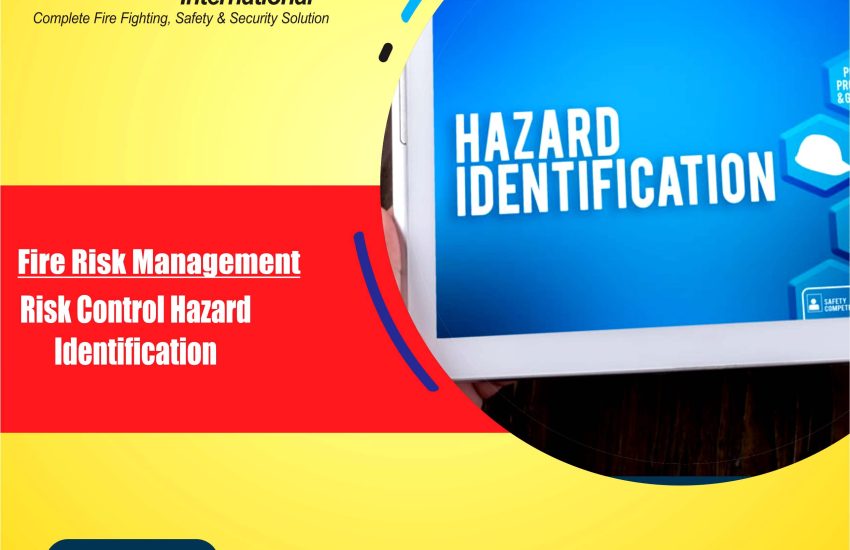Risk Control Hazard Identification are essential components of workplace safety. Identifying potential hazards and implementing effective risk control measures can prevent accidents, injuries, and other harmful events. In any organization, proactively addressing risks ensures not only the safety and well-being of employees but also improves operational efficiency and compliance with regulatory standards. This article explores the process of hazard identification, the importance of risk control, and actionable steps for ensuring a safe and productive work environment.
What is Hazard Identification?
Hazard identification is the process of recognizing potential dangers that could harm workers, the environment, or the organization. These hazards may include physical, chemical, ergonomic, biological, and psycho social factors that pose a risk to health and safety. By identifying hazards early on, organizations can take preventative actions to reduce the likelihood of incidents.
The Importance of Hazard Identification
Effective hazard identification is crucial for several reasons:
- Prevention of Accidents: Identifying hazards early can prevent workplace accidents, injuries, and fatalities. A proactive approach ensures a safer work environment.
- Legal Compliance: Workplace health and safety regulations require businesses to identify and control hazards. Non-compliance can result in penalties and legal consequences.
- Cost Savings: Preventing accidents and injuries can reduce healthcare costs, insurance premiums, and lost productivity. Identifying hazards before they escalate can save the organization significant financial resources.
- Improved Productivity: A safe work environment boosts employee morale and productivity. Workers feel more confident and focused when they know their safety is prioritized.
Common Types of Hazards in the Workplace
Hazards can take many forms, and understanding each type is crucial for effective risk control. Common hazards in the workplace include:
- Physical Hazards: These include machinery, equipment, noise, temperature extremes, and radiation. For example, workers in construction or manufacturing may face physical hazards like heavy machinery or falling objects.
- Chemical Hazards: Exposure to hazardous chemicals, such as solvents, gases, or asbestos, can cause serious health issues. Industries like chemical manufacturing, agriculture, and laboratories often face chemical risks.
- Biological Hazards: These include viruses, bacteria, fungi, and other pathogens. Healthcare workers, for instance, may be exposed to biological hazards like blood borne pathogens.
- Ergonomic Hazards: Poor workplace design or repetitive movements can lead to musculoskeletal disorders (MSDs). Employees in offices or factories may face ergonomic risks from improper seating or repetitive tasks.
- Psycho social Hazards: These involve stress, harassment, bullying, and other mental health issues. Workplace stress and lack of work-life balance can lead to burnout, affecting employee well-being and performance.
What is Risk Control?
Risk control refers to the strategies and measures put in place to reduce or eliminate the identified hazards. These controls are designed to minimize the likelihood of accidents, injuries, and illnesses, ensuring a safer work environment. Risk control strategies may involve engineering solutions, administrative changes, training, or personal protective equipment (PPE).
Types of Risk Control Measures
- Elimination: The best method of risk control is to eliminate the hazard entirely. For example, replacing hazardous machinery with safer alternatives can remove physical risks.
- Substitution: If elimination is not possible, substitution involves replacing a hazardous substance or process with a safer one. For instance, using non-toxic chemicals instead of hazardous ones reduces chemical risks.
- Engineering Controls: Engineering controls involve redesigning the workspace or equipment to minimize risk. This can include installing ventilation systems, safety guards, or noise reduction measures.
- Administrative Controls: These are policies and procedures that reduce the risk of exposure. Examples include job rotation, scheduling breaks, and safety training programs.
- Personal Protective Equipment (PPE): PPE includes safety gear such as helmets, gloves, goggles, and respirators. While PPE is a last line of defense, it is essential for protecting workers in high-risk environments.
Steps for Hazard Identification and Risk Control
- Conduct Workplace Inspections: Regular workplace inspections are critical for identifying potential hazards. Look for unsafe practices, faulty equipment, or areas that may pose a danger to workers.
- Consult with Employees: Employees are often the first to recognize hazards in their daily tasks. Encourage open communication and involve workers in identifying risks and suggesting solutions.
- Use Risk Assessment Tools: Tools like risk matrices, checklists, and hazard analysis can help systematically evaluate the potential risks in the workplace.
- Prioritize Risks: Not all hazards carry the same level of risk. Assess the likelihood and severity of each hazard to prioritize control measures.
- Implement Control Measures: Once hazards are identified and prioritized, implement appropriate control measures. Use a combination of elimination, substitution, engineering controls, administrative controls, and PPE to manage risks.
- Monitor and Review: Risk control is an ongoing process. Continuously monitor the effectiveness of control measures and review them regularly to adapt to changing conditions or new hazards.
The Role of Training in Hazard Identification and Risk Control
Training is a crucial element of hazard identification and risk control. Proper training helps workers recognize hazards, understand risk control measures, and take appropriate actions. Employees should be trained on:
- How to identify hazards in the workplace.
- The use of risk assessment tools and techniques.
- The proper use of PPE and safety equipment.
- How to respond in the event of an emergency or hazard exposure.
Conclusion
Risk Control Hazard Identification and risk control are essential for maintaining a safe and productive workplace. By systematically identifying hazards, assessing risks, and implementing control measures, businesses can prevent accidents, injuries, and health issues. Regular training and ongoing monitoring ensure that risk control strategies remain effective. Ultimately, a proactive approach to risk management enhances employee safety, boosts morale, and ensures compliance with legal standards, making it a win-win for both employees and the organization.


